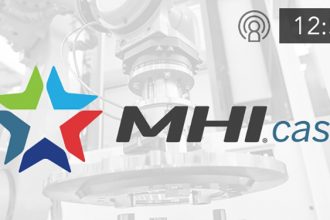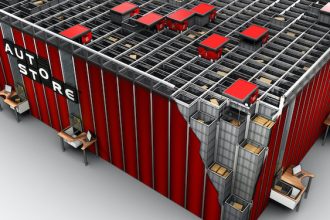Ideas For Resolving Warehouse Labor Shortage Issues Shared In MODEX 2020 Session By The MHI Solutions Community

With warehouse labor challenges (attraction, retention, turnover, and more) at the forefront of most distribution center managers’ minds, members of the Solutions Community of MHI offered both tactical and strategic recommendations to attendees of a free, MODEX 2020 on-floor seminar: “Do you have a Labor Shortage? The Solutions Community of MHI can help.” Presented this past March in Atlanta, the 40-minute interactive session’s slides and audio were recorded for those who were unable to attend, or who wish to experience the presentation a second time.
Operations considering automation of their existing manual processes are advised to optimize those first in order to more easily and rapidly benefit from such an investment. To improve manual operations, a series of tactical recommendations that can be implemented immediately is discussed. The group suggests engaging process experts (as well as internal experts) to walk through critical fulfillment centers and review current processes — not personnel — with an eye to pinpointing improvements. These might include areas of inefficiencies, processes that could be streamlined, congested space that would benefit from reorganization, and more. Once these areas have been identified, deploy a tune-up session for any existing automated systems to maximize their performance and mitigate potential downtime.
The session emphasizes that the process evaluation should focus on manual movements and how to empower them with tools and technology. To eliminate unnecessary movement, consider matching the process with the appropriate goods-to-person solution, such as: automatic guided vehicles (AGVs); shuttles; autonomous mobile robots (AMRs); carts; robotic picking, palletizing and induction; conveyors and sorters; pick modules; pick- and put-to-light; and manifest solutions.
Three case study examples of solutions taking this approach to successfully address labor shortages are reviewed. These include robotic sorter induction that runs unattended, allowing employees to be reassigned and to handle exceptions; a robotic palletizer that eliminates repetitive motions and lifting when building pallets while permitting three employees to be reallocated to solve labor shortages in other departments; and an automated manifest system — including conveyors with diverts, barcode scanners, scale, and label print-and-apply — to eliminate mislabeling and human errors when keying information while removing a labor intensive process and significantly increasing throughput.
Additionally, a series of tactical actions that require minimal investment are suggested (and followed by case study examples), including:
- Develop additional training materials, including using video to record processes and user screens, or creating easily followed PowerPoint training sessions;
- Create visual aids, such as placing colored labels throughout a facility to simplify training of new employees;
- Adapt user interfaces to accommodate trainees who need more explanations or extra support, and to streamline processes for long-time, expert employees who can quickly navigate the system without prompts; and
- Connect with and leverage untapped labor pools, including military veterans, the disabled, high school students, and trade school students.
Looking ahead to deploying automation as a strategy to mitigate labor challenges in 2021, the presenters recommend evaluating a variety of automated solutions that can increase capacity, speed, and accuracy within an operation struggling to find and retain labor. These include automated storage and retrieval systems (AS/RS) and shuttle systems, integrated automated conveyor solutions, a warehouse management system (WMS) and a warehouse execution system (WES) to completely integrate those automated solutions.
As part of this strategic evaluation into automation investment, the session advises first determining consumer expectations (which increasingly include same-day delivery). Then, assess the fulfillment network to ensure facilities are located as close to consumers as needed to meet service level agreements. Next, improve quality and right size orders by considering digital automation, including WMS and WES, which ensure decision making is made appropriately for each fulfillment channel. Finally, determine if an investment in automation will accelerate the speed of delivery; the presenters recommend first building the automation ecosystem around the most difficult orders to process — eaches — then expand automated systems outward from there. This maximizes the value of the automation investment.
Want to learn more? The members of MHI’s Solutions Community are available to discuss the evaluation process, tactical and strategic approaches, and automation solutions.



